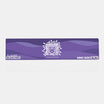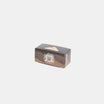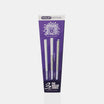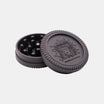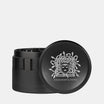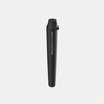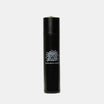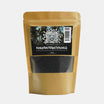Classic cigarette filters vs activated carbon filters
Some swear by them, others are still a bit skeptical - activated carbon filters. Today we want to make a big comparison between them and the classic cigarette filter to give you an overview of which is the right filter for which situation. In order to get a meaningful result, we have to split our comparison up a bit. I am sure the following results will surprise you. So let's start:
What should be smoked?
Cigarette or joint - what should it be? Depending on the answer to this question, one filter is better than the other, but why is that?
Let's take a look at the structure of both:
Cigarette filters are made of cellulose acetate
The classic cigarette filter is available in different sizes and diameters. The most common variant is probably the slim cigarette filter with a length of 15 mm and a diameter of 6 mm. These cigarette filters are often made from very tightly pressed cellulose acetate. This material keeps the harmful substances contained in cigarette smoke like
- tar
- nicotine
- arsenic
- Lead
- Hydrocyanic acid
back (all carcinogenic) and also ensures that larger pieces of tobacco do not end up in your mouth. According to the latest findings, this filter ensures a reduction in pollutants of around 60% compared to smoking without a filter (also applies to paper filters). By using cigarette filters, smokers are spared a huge amount of harmful substances. However, this information is provided without guarantee and depends heavily on which filter and which tobacco is actually smoked. So this only serves as a rough guide.

Activated carbon filter - structure:
There are now numerous manufacturers of activated carbon filters, which also makes defining the filter structure much more difficult. For a better comparison, we also use activated carbon filters with the well-known “tipsize” for comparison. At 25 mm, these are slightly longer than conventional cigarette filters, but are also 6 mm in diameter. Here, the inside is filtered with pieces of activated carbon (usually coconut or hard coal).
If you are interested in more detail about what makes the perfect activated carbon filter and how it works in detail, then take a look here .
The aim of the activated carbon inside is to filter as many pollutants as possible from the passing smoke. To do this, she uses the law of adsorption. This binds pollutants to the surface of the activated carbon. Independent research from 2018 indicates that activated carbon filters effectively allow 40% fewer free radicals to penetrate compared to regular cigarette filters. A separate study showed that activated carbon filters can reduce exposure to p-benzosemiquinone, an irritant in cigarette smoke, by up to 50%. This means you have increased efficiency in filtering carcinogenic substances compared to conventional cigarette filters.

So if we come back to the question posed at the beginning, it can be said that cigarette filters are generally well suited for smoking tobacco thanks to their design. They carefully filter out gross substances as well as tar and nicotine from the smoke. In addition, annoying scratching when smoking is reduced.
However, they are not suitable for use in joints. This is mainly due to their tightly pressed shape, which can also filter out the desired ingredients such as THC and CBD when smoking a joint.
With the activated carbon filter it can be said that it can also be used when smoking tobacco, but large parts of nicotine and tar will remain in the filter. So if you want to smoke less harmful substances or want to completely avoid tobacco smoke in the long term, screwing in such a filter is definitely an option.
However, carbon filters show their best results when used in a joint. Here, large areas of pollutants from tobacco smoke and the combustion process are removed, while most of the cannabis ingredients can pass through the filter undisturbed. This offers the consumer the advantage of a significantly improved smoking experience. In addition, the taste is not distorted by activated carbon filters with open-pored cellulose closures, such as the "Medusa filter", as no activated carbon dust gets into the throat. Your lungs will thank you. You can find out what makes the perfect activated carbon filter here .
⇨ We absorb over 7,000 different chemicals when we smoke without a filter - many of which are still unexplored.
This should finally answer the question about the health effects of smoking with filters. But what about the health of our environment? What environmental impact do the filters have?
Differences in environmental pollution
Admittedly, it is difficult to show a clear result here, as there are now almost countless filter variants on the market, some of which differ greatly from one another.
We still want to try:
Cigarette filters are often made from tightly pressed cellulose acetate:
This is a biodegradable, bio-based plastic that can be used, for example, to make sustainable food packaging. Accordingly, it also ends up in municipal waste. Cellulose acetate (abbreviation CA.) is classified as a thermoplastic, but is more of a modified natural material. During production, cellulose, usually in the form of natural pulp, is esterified with acetic acid and acetic anhydride. A process that is now completely environmentally friendly.
The only (big) problem: With cigarette filters, the cellulose acetate is pressed very tightly in order to achieve the highest possible filter results - but this means that liquid (drips when smoking or rain after careless disposal) has no way of getting inside to start the degradation process ( decompose more slowly). This entails a degradation period of ten to 15 years. Cigarette butts are toxic to our environment and threaten to contaminate 1,000 liters of water in our waterways. Per filter! According to WHO (World Health Organization), around 4.5 trillion cigarette butts are thrown away into nature every year and thus pollute it. An incredible number. This not only has a harmful impact on our environment, it also affects us and our diet. Toxic soils produce fewer and poorer harvests.
That's why it's so important that they are disposed of correctly and end up in the trash (ashtrays).
There are now also cigarette filters with a significantly shortened degradation time and the same density made from hemp. They will serve as an alternative in the future. But disposing of them correctly is just as important. Otherwise, absorbed pollutants still end up in the environment and are largely independent of the degradation time.

But what about activated carbon filters?
Activated carbon filters with ceramic or plastic caps:
The ceramic filter consists of a cardboard tube, design paper and the two ceramic lids that give it its name. Ceramics are one of the oldest materials in human history. Although it is essentially a natural product, a large amount of energy is still required to produce ceramic, as the ceramic often needs to be heated or sintered at 1200°C for 6-12 hours. This means that any claim to environmental compatibility is eliminated during production. Current research shows that the use of fossil fuels to heat ovens in the mass production of ceramic products in particular is damaging to the environment as it leads to high emissions. In addition, ceramic is not biodegradable and can therefore easily last a human life or even entire generations. So if we compare this result with that of the cigarette butt, we have to say:
⇨ The cigarette filter poses a problem because of its high density and long degradation time, but its production is fundamentally environmentally friendly.
⇨ With the activated carbon filter with a ceramic cap, the “problem” starts earlier. The manufacturing process consumes enormous amounts of energy. When disposed of later, the pollutants are sealed in the activated carbon, but ceramic is not biodegradable.
The situation is very similar with the activated carbon filter with plastic closures, but microplastic particles also end up in the environment.
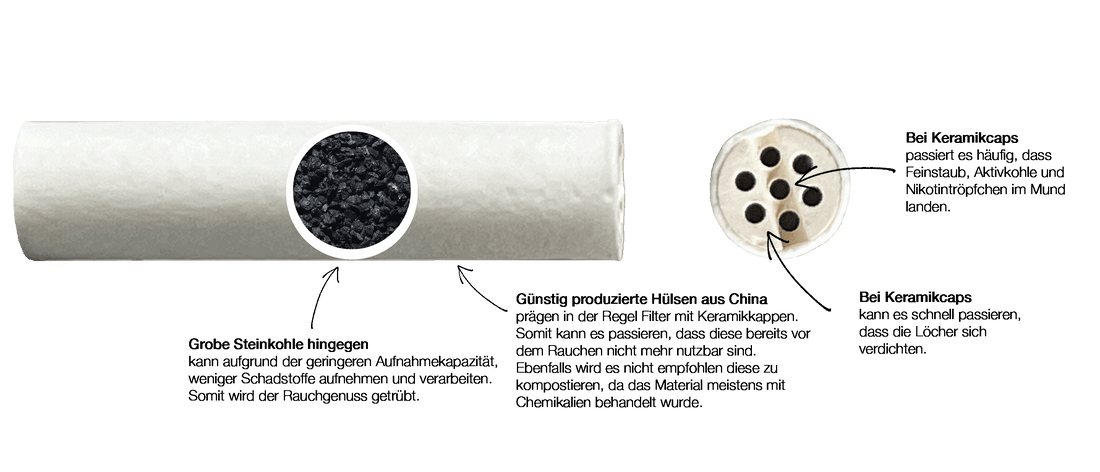
But why compromise?
We recommend the most modern activated carbon filters with open-pored cellulose closures and fine coconut activated carbon. Not only are they environmentally neutral and made in Germany, but they also provide smoking pleasure with fewer pollutants.
100% pure taste with 0% constipation.
So do something good for yourself and the environment and try our Medusa filters. Made with heart and solar power in Germany to exceed your highest expectations. Find out the difference now!
By the way, not only are our sleeves 100% recyclable, but all other components are also completely biodegradable.
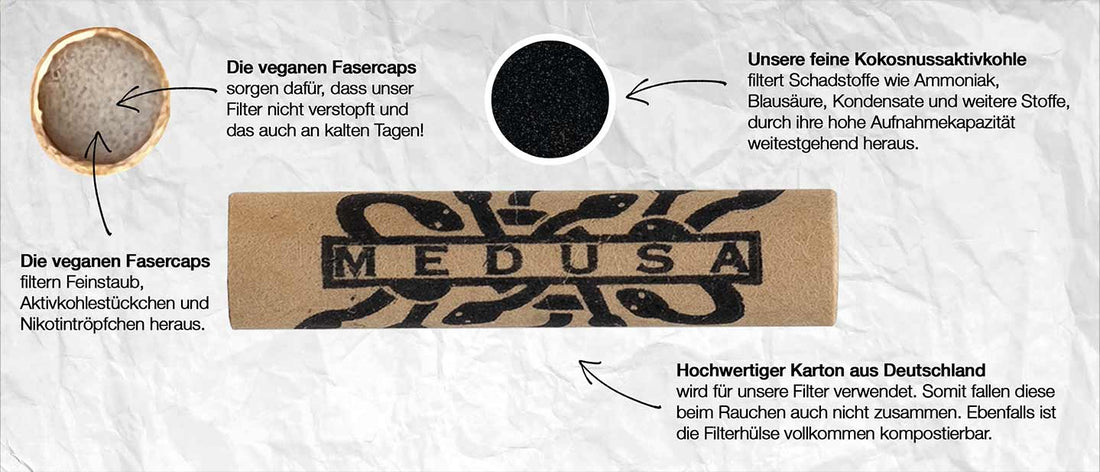
Frequently asked questions about comparing filters
An activated carbon filter and a conventional cigarette filter have fundamentally different functions. While a classic cigarette filter is primarily used to filter tobacco particles from smoke, an activated carbon filter can actually remove around 40% more pollutants from smoke. This is mainly because activated carbon has the ability to bind to certain pollutants.
Using an activated carbon filter offers many benefits to the smoker. On the one hand, the smoke can be made less harmful to the lungs by filtering pollutants, which can make an important contribution to the health of the smoker. On the other hand, the use of activated carbon filters can also reduce unpleasant side effects of smoking, such as scratchy throats.
Cigarette filters are mainly made of the organic plastic cellulose acetate, which is biodegradable if disposed of correctly. However, if it ends up in the environment and releases absorbed pollutants, it can cause great damage. Due to its tight pressing, it has a degradation time of 10 to 15 years.
Cigarette filters are primarily made of cellulose acetate, a bioplastic that is biodegradable if disposed of correctly. However, if it ends up in the environment and releases absorbed pollutants, it can cause great damage. Due to its tight pressing, it is estimated that it will fall apart in 10 - 15 years.
You might also be interested in:
Sources:
Effect of Charcoal in Cigarette Filters on Free Radicals in Mainstream Smoke https://www.ncbi.nlm.nih.gov
Activated charcoal filter effectively reduces p-benzosemiquinone from the mainstream cigarette smoke and prevents emphysema https://pubmed.ncbi.nlm.nih.gov
https://www.abstractsonline.com/pp8/#!/5789/presentation/23033
Disclaimer:
This content is intended for educational purposes only. The information provided comes from research work, personal expert discussions and our own experiences that have been compiled.























